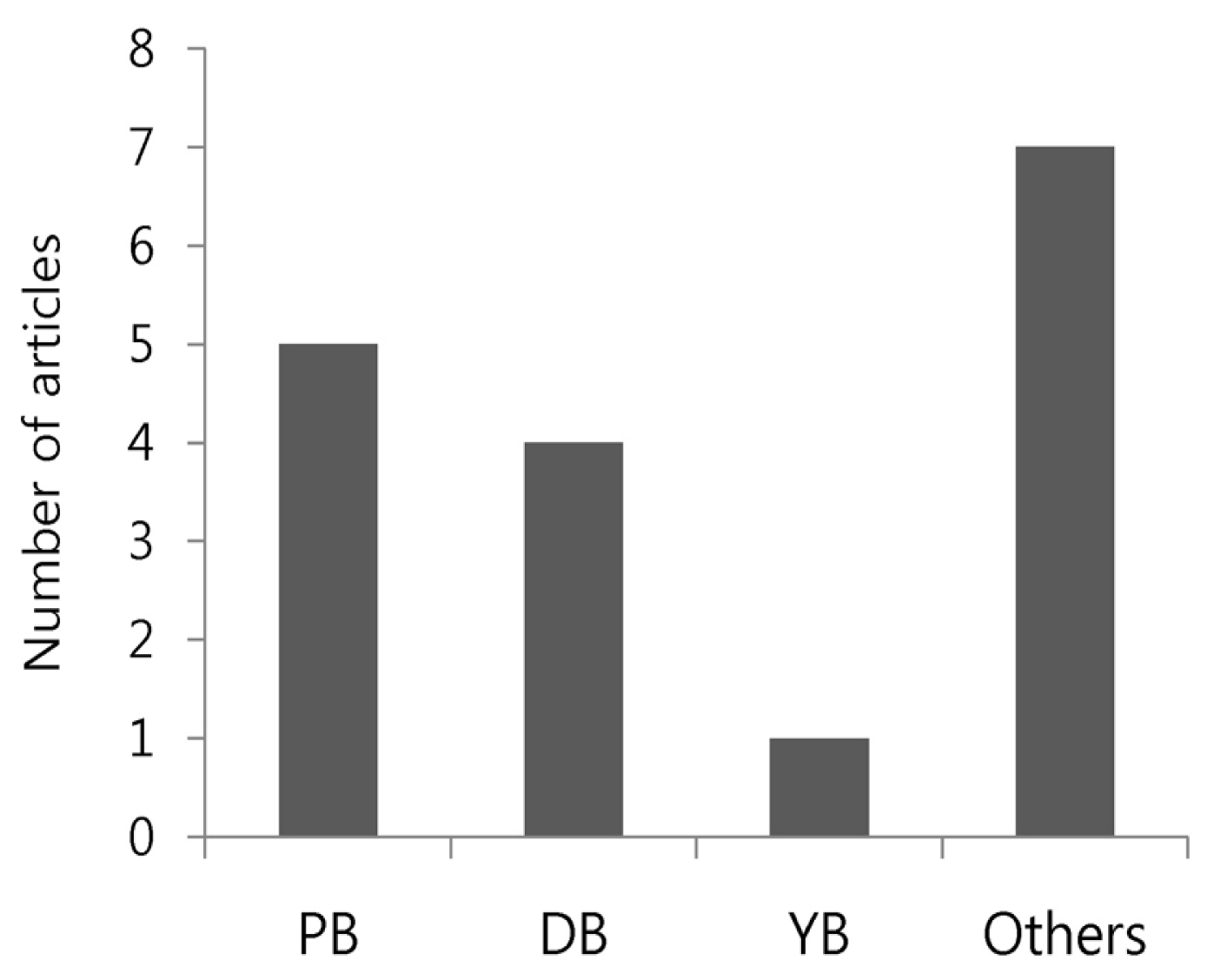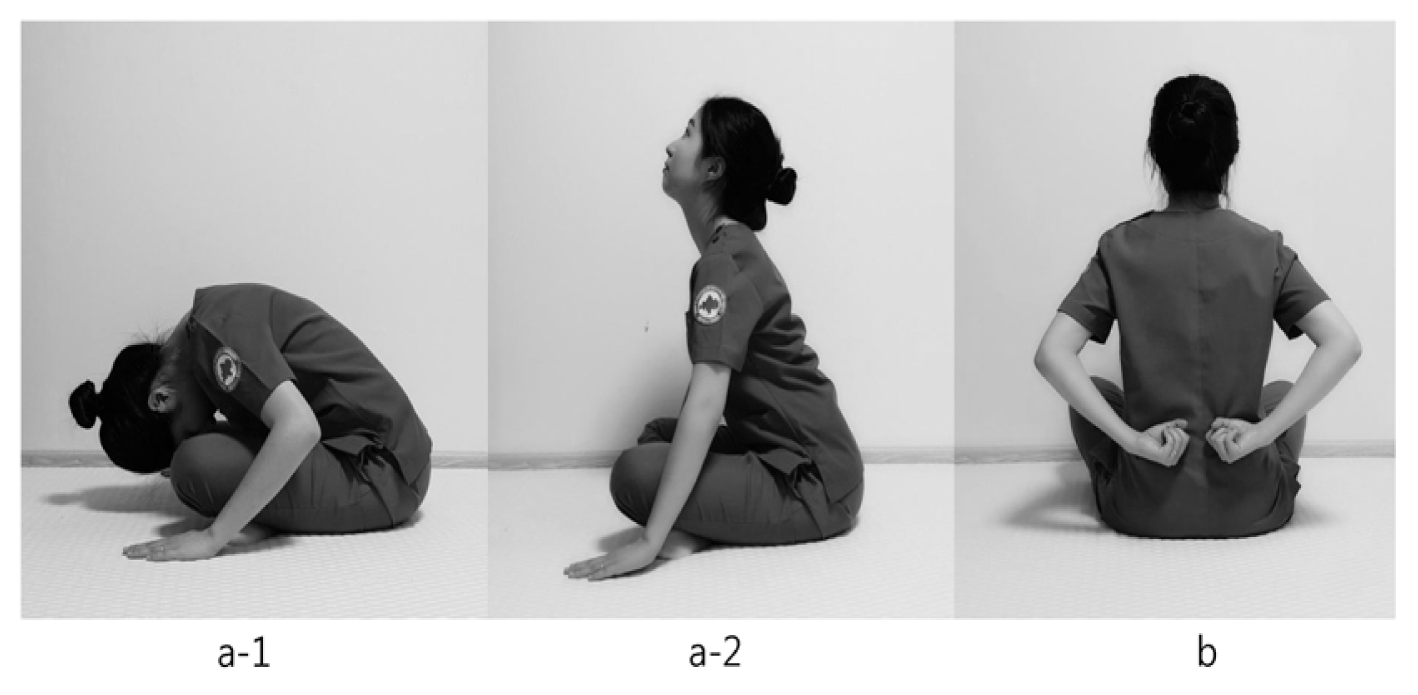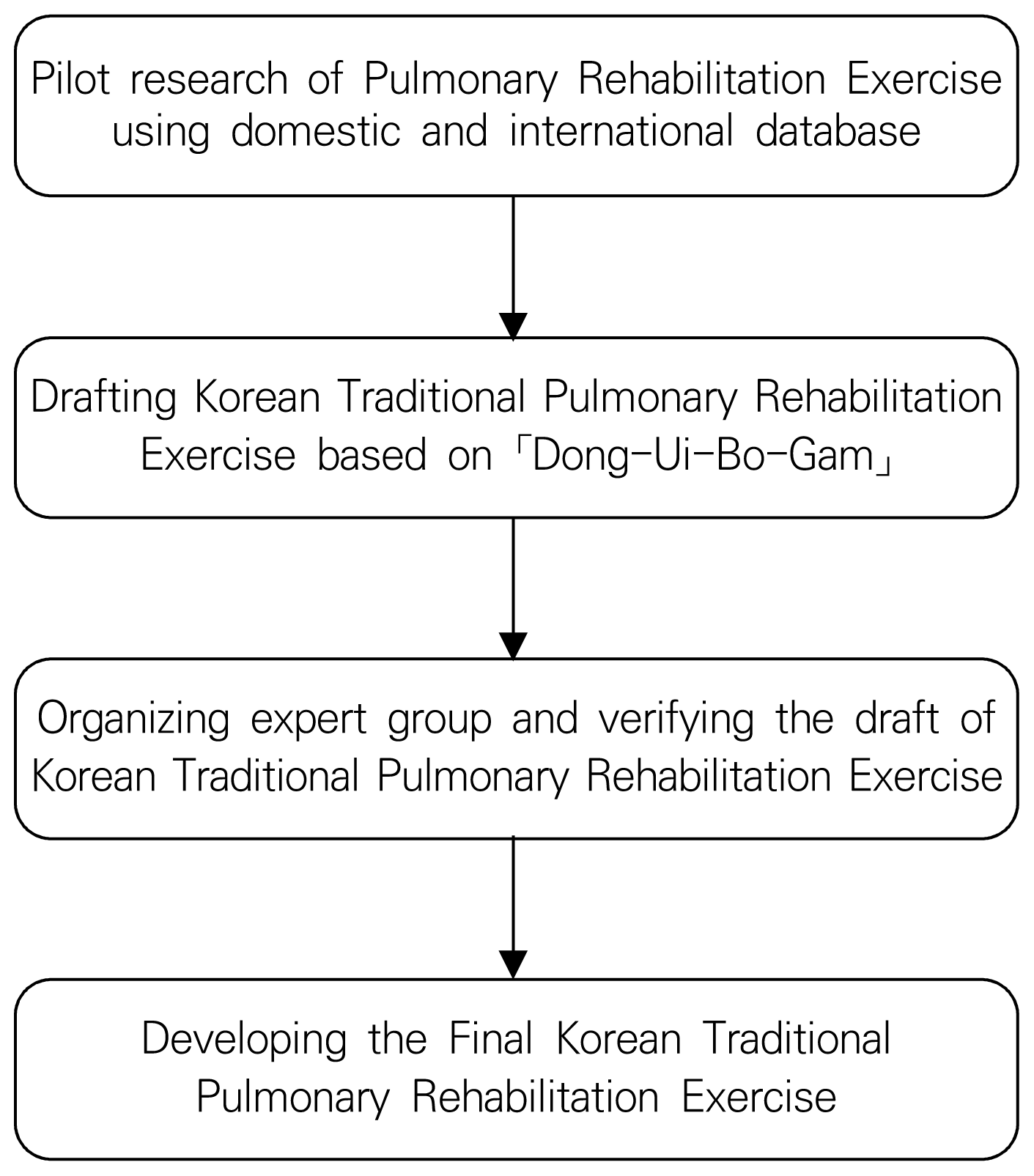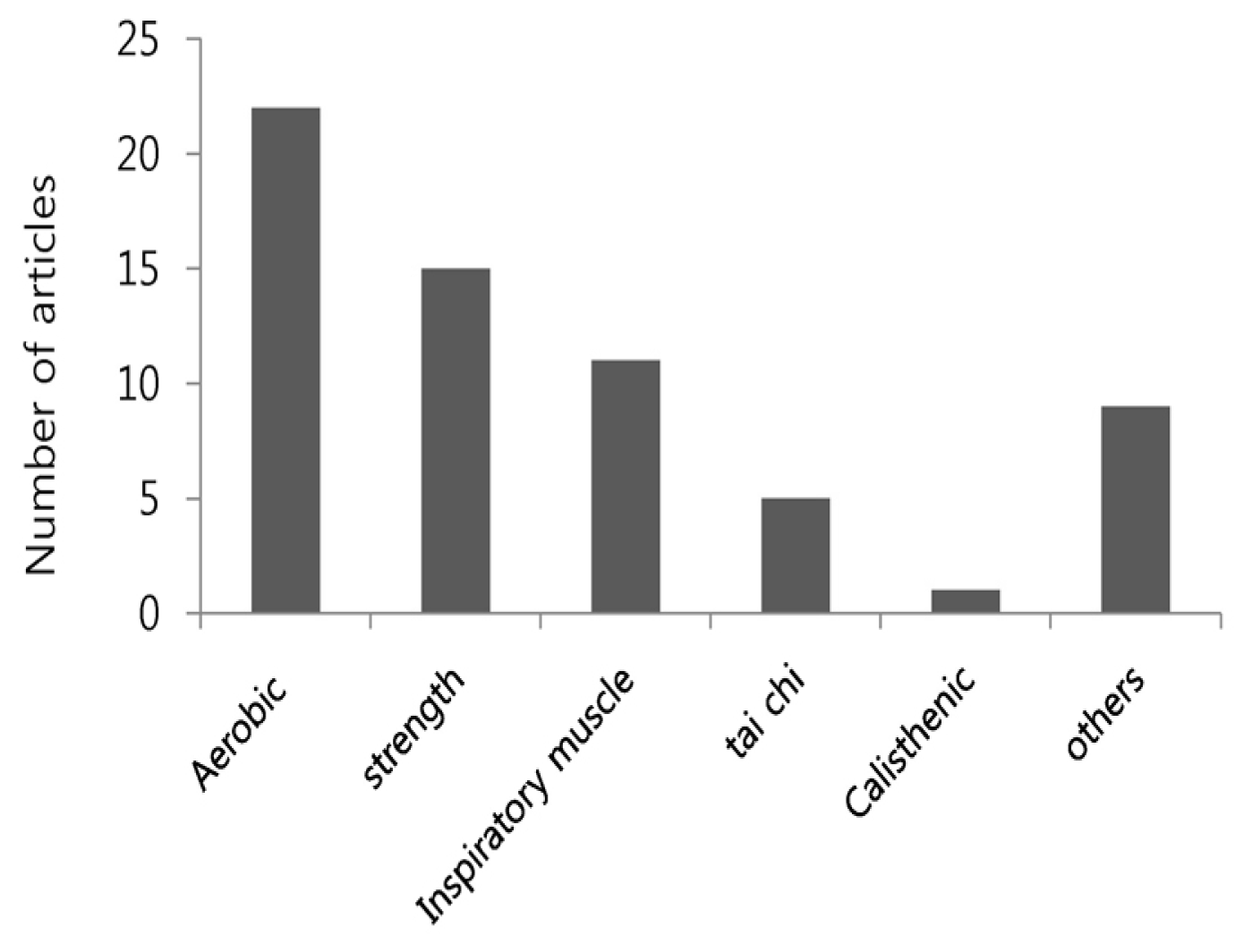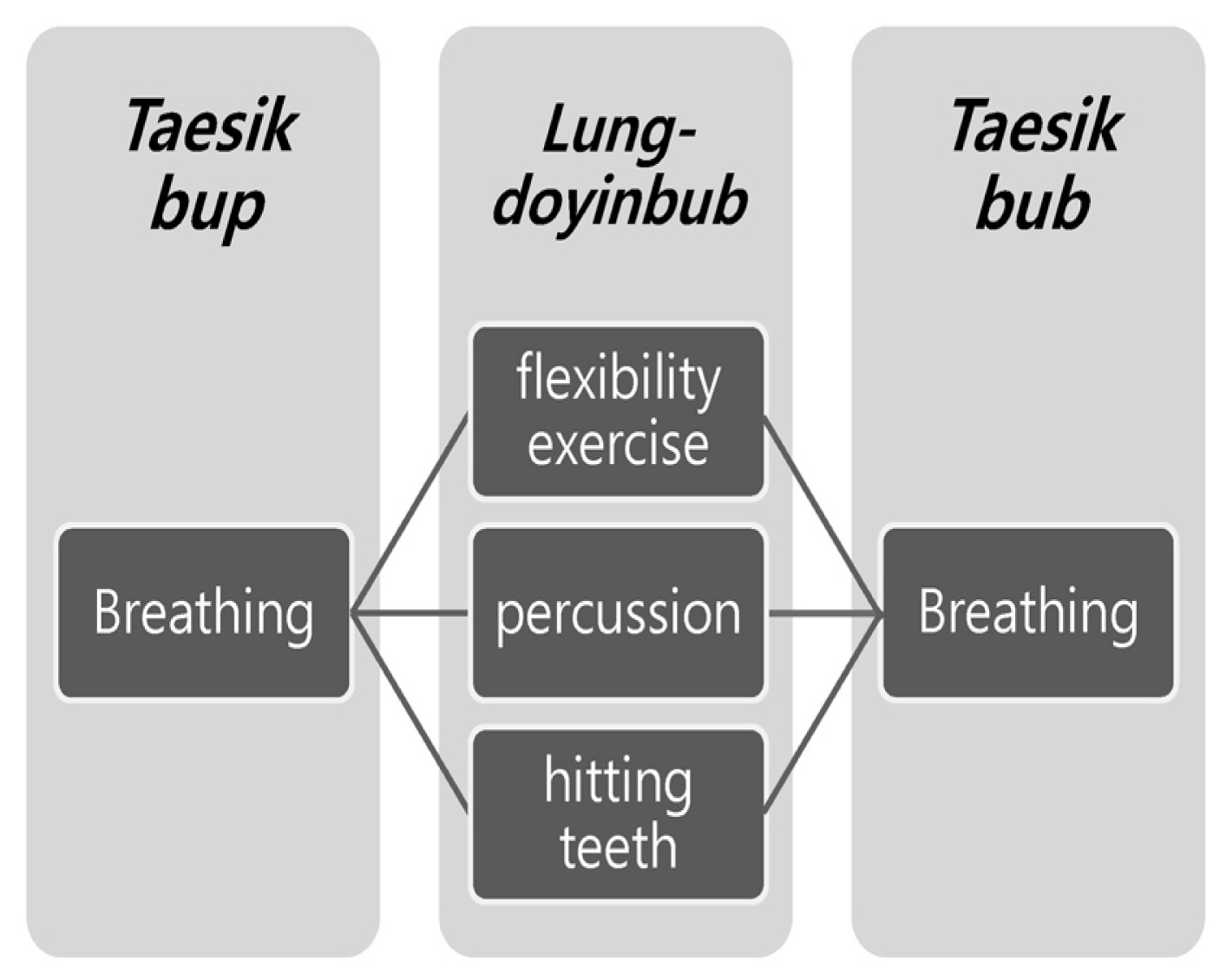References
1. Mathers CD, Loncar D. Projections of global mortality and burden of disease from 2002 to 2030. PLoS medicine 2006;3(11):e442.
2. Hwang YI, Park YB, Yoo KH. Recent trends in the prevalence of chronic obstructive pulmonary disease in Korea. Tuberculosis and respiratory diseases 2017;80(3):226–9.
3. Kim J, Lee TJ, Kim S, Lee E. The economic burden of chronic obstructive pulmonary disease from 2004 to 2013. Journal of medical economics 2016;19(2):113–20.
4. Lee J, Lee JH, Kim JA, Rhee CK. Trend of cost and utilization of COPD medication in Korea. International journal of chronic obstructive pulmonary disease 2017;12:27.
5. Celli BR, MacNee W, Agusti A, Anzueto A, Berg B, Buist AS, et al. Standards for the diagnosis and treatment of patients with COPD: a summary of the ATS/ERS position paper. European Respiratory Journal 2004;23(6):932–46.
6. Nici L, ZuWallack RL. Pulmonary rehabilitation: future directions. Clinics in chest medicine 2014;35(2):439–44.
7. Paz-Díaz H, De Oca MM, López JM, Celli BR. Pulmonary rehabilitation improves depression, anxiety, dyspnea and health status in patients with COPD. American Journal of Physical Medicine & Rehabilitation 2007;86(1):30–6.
8. McCarthy B, Casey D, Devane D, Murphy K, Murphy E, Lacasse Y. Pulmonary rehabilitation for chronic obstructive pulmonary disease. Cochrane Database of Systematic Reviews 2015;(2)
9. Nici L, Donner C, Wouters E, Zuwallack R, Ambrosino N, Bourbeau J, et al. American thoracic society/European respiratory society statement on pulmonary rehabilitation. American journal of respiratory and critical care medicine 2006;173(12):1390–413.
10. Raghu G, Collard HR, Egan JJ, Martinez FJ, Behr J, Brown KK, et al. An official ATS/ERS/JRS/ALAT statement: idiopathic pulmonary fibrosis: evidence-based guidelines for diagnosis and management. American journal of respiratory and critical care medicine 2011;183(6):788–824.
11. Newall C, Stockley RA, Hill SL. Exercise training and inspiratory muscle training in patients with bronchiectasis. Thorax 2005;60(11):943–8.
12. Mendes FA, Gonçalves RC, Nunes MP, Saraiva-Romanholo BM, Cukier A, Stelmach R, et al. Effects of aerobic training on psychosocial morbidity and symptoms in patients with asthma: a randomized clinical trial. Chest 2010;138(2):331–7.
13. Brooks D, Sottana R, Bell B, Hanna M, Laframboise L, Selvanayagarajah S, et al. Characterization of pulmonary rehabilitation programs in Canada in 2005. Canadian respiratory journal 2007;14(2):87–92.
14. Yohannes AM, Connolly MJ. Pulmonary rehabilitation programmes in the UK: a national representative survey. Clinical rehabilitation 2004;18(4):444–9.
15. Garvey C, Fullwood MD, Rigler J. Pulmonary rehabilitation exercise prescription in chronic obstructive lung disease: US survey and review of guidelines and clinical practices. Journal of cardiopulmonary rehabilitation and prevention 2013;33(5):314–22.
16. The Korea Academ of Tuberculosis and Respiratory diseases. Consensus Document on Pulmonary Rehabilitation in Korea 2015 Seoul: The Korea Academ of Tuberculosis and Respiratory diseases; 2015. p. 4.
17. Hong W. Kyojung Huangje naegyeong yeongchu Seoul: Dongyang Medicine Institute; 1985. p. 198.
18. Son SM. Bigeup cheon-geum yobang Beijing: People’s Medical Publishing House(PMPH); 1982. p. 182–5.
19. Kwon YD. Geumjeong Sachajeonseo Jabaeo uigalyu 4Seoul: Daesung Publish; 1980. p. 562.
20. So WB. Jebyeong wonhuron Beijing: People’s Medical Publishing House(PMPH); 1988. p. 143–55.
21. Jo HC. Seongje chongnok1 Taibei: Sinwenfeng Publish; 1978. p. 875–9.
22. Heo J. Dong-Ui-Bo-Gam Hadong: Donguibogam Publish; 2005. p. 62–4.
p. 259.
23. Kim KH, Yun KH. A Study of the relation of Kigong (Doinbub) and 12 Jung-Kyung. Journal of Acupuncture Research 1996;1(1):92–129.
24. Kim YH, Heo SY. The Systemic Review of Jangbukyunglag Doinibub. The Journal of Jeahan Oriental Medical Acadamy 1999;4(1):174–89.
25. Ries AL, Bauldoff GS, Carlin BW, Casaburi R, Emery CF, Mahler DA, et al. Pulmonary rehabilitation: joint ACCP/AACVPR evidence-based clinical practice guidelines. Chest 2007;131(5):4S–42S.
26. de Araujo CLP, Karloh M, Reis CMD, Palú M, Mayer AF. Pursed-lips breathing reduces dynamic hyperinflation induced by activities of daily living test in patients with chronic obstructive pulmonary disease: A randomized cross-over study. Journal of rehabilitation medicine 2015;47(10):957–62.
27. Yamaguti WP, Claudino RC, Neto AP, Chammas MC, Gomes AC, Salge JM, et al. Diaphragmatic breathing training program improves abdominal motion during natural breathing in patients with chronic obstructive pulmonary disease: a randomized controlled trial. Archives of physical medicine and rehabilitation 2012;93(4):571–7.
28. Kaminsky DA, Guntupalli KK, Lippmann J, Burns SM, Brock MA, Skelly J, et al. Effect of yoga breathing (pranayama) on exercise tolerance in patients with chronic obstructive pulmonary disease: a randomized, controlled trial. The Journal of Alternative and Complementary Medicine 2017;23(9):696–704.
29. Holland AE, Hill CJ, Jones AY, McDonald CF. Breathing exercises for chronic obstructive pulmonary disease. Cochrane Database of Systematic Reviews 2012;(10)
30. Bianchi L, Roca J. Paathophysiology of exercise and exercise assessment. Pulmonary Rehabilitation London: Hodder Arnold; 2005. p. 112–23.
31. Bolton CE, Bevan-Smith EF, Blakey JD, Crowe P, Elkin SL, Garrod R, et al. British Thoracic Society guideline on pulmonary rehabilitation in adults: accredited by NICE. Thorax 2013;68(Suppl 2):ii1–ii30.
32. Kim KS, Byun MK, Lee WH, Cynn HS, Kwon OY, Yi CH. Effects of breathing maneuver and sitting posture on muscle activity in inspiratory accessory muscles in patients with chronic obstructive pulmonary disease. Multidisciplinary respiratory medicine 2012;7(1):9.
33. Leung R, Alison J, McKeough Z, Peters M. A study design to investigate the effect of short-form Sun-style Tai Chi in improving functional exercise capacity, physical performance, balance and health related quality of life in people with Chronic Obstructive Pulmonary Disease (COPD). Contemporary clinical trials 2011;32(2):267–72.
34. Frownfelter D, Dean E. Cardiovascular and Pulmonary Physical Therapy-E-Book: Evidence to Practice Elsevier Health Sciences; 2014.
35. Hwang EH, Jeong SD, Lee JH, An HM, Park JW. A Study of the Correlativity of Gochi with Dementia. Journal of Meidical Gi-Gong 2009;11(1):1–58.
